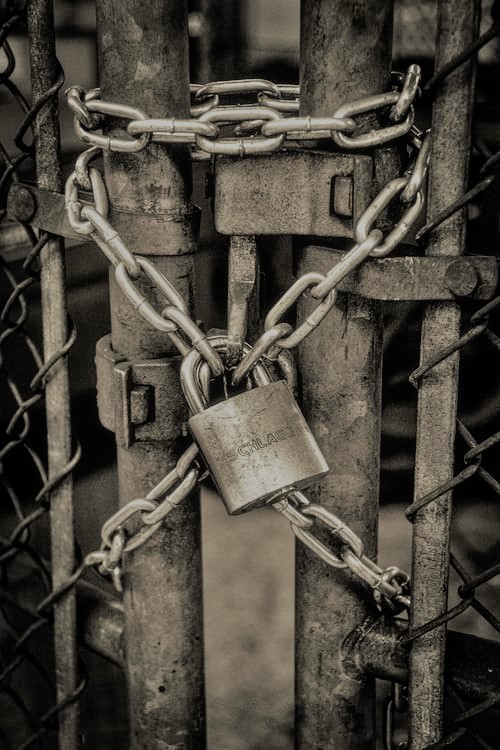Abuse is a word spoken in hushed tones: defined as misusing something or using it for the wrong purpose. Emotional abuse is repeatedly or recurrently treating another with cruelty or violence. Often abuse aims at having and maintaining power and control over the victims. We associate abuse with female victims but in recent times we have seen this being meted out on persons of all genders. Initially assumed to be the physical form of inflicting pain, it is now clear that there are many forms of abuse with equally devastating consequences on the victims. It is associated with stigma and sometimes the very victims are blamed for the abuse meted out on them. Few people understand the full extent of abuse and therefore may not be able to identify when abuse happens or help a victim of abuse in their immediate environment. Being aware of abuse could be the difference between life and death for a victim.
Types of abuse
Abuse can take many forms. Usually one or a few types of abuse occur at a time. It can be so subtle that it takes the victim a while to realize what is going on, or overt and obvious to all and sundry.
- Physical abuse
This is the most widely known form of abuse. It involves all forms of physical violence towards the victim. The violence can be inflicted by hand or using an object. Examples of acts of physical abuse are kicking, slapping, pinching, head-butting, shoving/pushing, dragging, scratching, chocking, biting, strangulating, tying, hanging etc. It results in bruises, physical injuries and scars to the victim. Some of the injuries can be so severe they result in grievous bodily harm, loss of body parts or function, disability or even death. A victim of physical abuse can have visible bruises or scars that may be in different stages of healing if the abuse is repeated. They can have black eyes, broken bones, cuts, lacerations, scratches, bruises, torn clothing, blood stained clothing etc. The victims are scared and may retreat away from others. A child may have obvious difficulty walking, eating, urinating or sitting.
- Emotional/verbal/mental/psychological abuse
This is abuse where the victim is insulted, called names, shamed, discouraged, stalked, put down, humiliated blamed, labelled, threatened or intimidated. It can also include instances where the victim is ridiculed or harassed, yelled at, isolated from friends and family or denied a chance to participate in regular activities such as attending functions. The perpetrator may use silence to control the victim. An adult may also be treated like a child e.g. expected to seek permission for activities or things, curfews or not allowed to make decisions without the approval of the perpetrator. The abuse can be overt or covert and often the victim may not have evidence that the abuse took place. The victim is left ashamed, emotionally drained, hurt and broken. They may manifest with features of depression, anger outbursts, addictive behavior, suicidal tendencies or physical illness due to the intense stress (psychosomatic illnesses). Children may have difficulties playing with other children, display overly aggressive play or have tearful outbursts. This abuse may at times be classified together with mental or psychological abuse. This is because the effects of the abuse have devastating consequences on the victims mental and emotional well-being. The perpetrator may deny having carried out the acts of abuse, and even blame the victim for triggering the abusive behavior. This can leave the victim confused and doubting their sanity.
- Sexual abuse
This is abuse where victims are forced or coerced to non-consensual sex or sexual acts against their wish. It can also happen in unions where there has been consensual sex if at a given time the victim is forced to have sex against their will. Sexual abuse includes sexually provocative movements/gestures, remarks that are sexual in nature, unwanted touching, rape, sodomy, coerced nudity, sexually explicit photographing. Apart from obvious pain and discomfort in the genital area, children may present with age-inappropriate play where they incorporate sexually-suggestive moves or acts in their play.
- Financial/Economic abuse
This is where the perpetrator uses finances or financial ability to control the victim. They could deny the victim access to money or make them have to beg/ask for money to meet their needs. They can exclude the victim from economic decisions e.g. where a spouse fails to involve their partner in investment decisions for their family. The perpetrator may get into bad credit and force the victim to pay or ask for money and use their right as a spouse to demand for it, even when they do not intend to pay. Financial abuse can take the form of control over financial ownership such as wills, inheritance or property.
- Other forms of abuse
Other forms of abuse include neglect of the victim e.g. a parent to a child or a spouse neglecting their vulnerable spouse by failing to provide their basic necessities such as food, shelter or clothing. The perpetrator can also use their own self neglect to cause the victim shame, or create additional burden to them and deny them a chance to rest or partake of activities of recreation. Abandonment of a vulnerable child or adult can be a form of abuse where the victim has no means to meet their basic necessities. It could also be where a spouse fails to support their estranged spouse in child care as a form of punishment to the spouse that has left the relationship. Religious or cultural restrictions to observe significant events such as cultural days or religious festivals can be a form of abuse. Litigation abuse can happen through the court system, such as when an abuser files excessive motions, petitions, and adjournments to make the victim continually come to court.
What to do if you suspect abuse
If you or someone you know suspect that you are a victim of abuse, it is important to identify if the there is an immediate threat to life. This requires that the victim leaves the abuse situation immediately. It may not be an easy process because they may be held hostage or likely to experience escalating abuse if the perpetrator suspects they intend to get away. It could also be a dependent relationship that is not easy to terminate such as between parent and child, or a long-term marital engagement. Often the abuser isolates the victim from friends and family making it harder for the victim to get out of the abusive relationship.
Informing the law enforcement to help get the victim to safety can help. The victim can also program their phone or smart watch with a speed dial that can be used to send an SOS to potential help/contacts when the situation becomes dire. Even the non-physical forms of violence may require the victim to get away from the abuse situation as a solution is arranged.
Learning about the various forms of abuse and how to cope enables the victim determine how to stay safe in the abusive situation. It may require resources and working with supportive people such as friends or family. It enables whatever choices the victim makes.
In some instances, the abuser masks their tracks very well, or may only carry out the abuse when with the victim. This is especially the case in emotional abuse. Since there are no scars to show for the abuse, the victim may be blamed for the abuse, or be accused of being petty. This may cause the victim to remain in the abusive situation, suffering devastating consequences in their physical well-being as a result of the intense stress and emotional turmoil. The victim is not to blame for being battered or mistreated neither are they the cause of the perpetrator’s abusive behavior. Each person is responsible for their behavior towards others no matter how angry they are and must be held to account. The best we can do in this situation is listen to the victim and offer them support and understanding, and where possible get them psychological therapy to help them deal with the abuse and determine the next course of action.
Joining a support group of people going through or that has successfully dealt with abuse will help the victim cope better and even determine how to overcome their unique situation in the best way possible.




